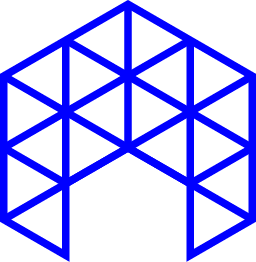Branding
Visual & Corporate Identity
There is some variation according to usage and business type, but for nearly every businesses I recommend the following basic items as a start:
Sometimes we add in big brands’ design, t-shirts, thank you cards, holiday cards, bookmarks and other items.
The brand style guide outlines proper use of the brand.
The first creative part of virtually every brand development is visual design. I’ll cover the verbal and action components in upcoming posts.
Adhering to the guidelines ensures continuity and continues to strengthen the brand.
Take care of your basic corporate identity deliverables, and they will take care of your business.
The identifying marketing materials you use to identify your company or brand. Every business needs a brand identity to which its customers relate and belong whenever they seek products and services that the industry provides.
It is true that brands must have a Unique Selling Proposition (USP) in order to create what marketers call brand loyalty as all these concepts are wrapped under the Branding which are made of three primary components:
-
Visual (identity)
-
Verbal (messaging)
-
Action (how you treat people)
Investing in professional brand identity materials does three things:
- It makes you look and feel more professional.
- It helps you project more confidence, thus you sell better.
- It makes the difference between looking like a fly-by-night organization or a real business people can depend on.
Logo
The first deliverable any brand should have is the conception of its Logo which is the main perceived item and the initial line of communication that a company has which should convey the company image. This deliverable includes and is not limited to:
- Logo Design
- Logo Guidelines
- Logo Usage & Applications
- Color Palette
- Tagline & Logo Lock-up
- Typography Options
- Guidelines on illustration and Photographic Styles
- Proper use of Logos, Taglines and Fonts
- Use of Infographics
- Brand Positioning
- Core Brand Pillars
Your logo is the visual cornerstone of your brand that tells people who you are, and does so in an incredibly memorable way. It sets the tone for nearly all of your marketing communications.
Tag line
The verbal part of your brand, but since your tag line accompanies your logo nearly everywhere it goes, your tag line development should be included with the initial brand development deliverables.
While your logo tells everyone who you are, you tag line tells people what you do and what you stand for. Your logo and tag line are a potent combination of meaningful, memorable brand.
A basic of any brand as it is the most used, stationery that is present in every aspect of the brand’s existence in its physical attributes distributed to the general public and contributors. Its main purpose is to present the official brand image and spread the word of its existence. This deliverable includes and is not limited to Business Cards, Business Forms (Invoices, Receipts, Letterhead, etc.), Envelopes, Labels, Folders.
Business Card
When someone asks for your number at the market, that’s an opportunity hanging in the air, which you can answer easily if you have a great business card handy. Even if you never leave your home or office, you must have a business card. And not just any business card. Your business card has the power to make a huge first impression, or to be silent as a lamb – even if it’s coming out of an envelope.
Letterhead, Envelope and Mailing Label
Many businesses use these items few times in a year, however, those few times are usually worth investing in good design and printing. If you send someone a fat proposal on a lasered letterhead in an ink-jetted envelope, you’ve just sent away a look on your hard work. Why risk losing that contract? Spend on quality stationery and look professional every time.
Brochure
Outdated? Nope, Think again. When your computer, iPod or iPad are absent, your brochure can make the sale. With a uniquely formatted and crisply designed rockstar brochure that makes you feel like two million bucks handing it out. The one that can be passed on to someone easily and with a word of recommendation. Your overview brochure is your impressive, convincing voice when you can’t be there.
Product Packaging
This deliverable is necessary for all businesses that sell tangible products on the marketplace and need branded packaging to convey the brand identity to the customers and the general public. This deliverable includes and is not limited to:
- Boxes
- Stickers
- Bags
- Merchandising
- Product Applications
This Digital output list of items is key to every company’s online presence as it reflects the virtual image of the brand on the web and as such the mirror image of its physical presence on the market. Therefore, a powerful and transparent message should be conveyed through these channels of communication. This deliverable includes and is not limited to:
- Email Signatures
- Landing Pages/Blog
- Newsletters
- Social Media
- Website
Website
Your website is the first or second point of contact for many people. Make it great & Budget well for it. Do not put up one that you have to apologize for.
If you’re not impressed by your website, no one else will be either (even if you apologize for it in advance). If you have a small budget, keep an open mind and work incrementally if you have to. Never settle for a lesser website than your brand deserves.
Your logo and corporate identity, including your business card and website, set the visual tone for your brand and many of your marketing communications. Colors, graphic standards, and type selections are all determined at this phase.
Framework
Think of your messaging framework as a well that you go to whenever you need to develop new messaging. It provides the foundation to ensure that your messaging is consistent and true to your brand. Your Messaging Framework includes most or all of these:
- Your Brand Promise: A short statement for your customers that conveys what you do
- Brand Value Proposition: A promise of value derived from functional and emotional benefits
- Brand Positioning: Where you fit in the marketplace
- Target Audience(s): Your ideal buyers or users
- Your Mission: What is your ultimate goal?
- Tone of Voice: Not just what announcer you would choose, but kind of like that!
- Elevator Pitch: A 30-second description of your value proposition. We prefer one in language that your grandmother would understand
- Brand Pillars: Your most important selling points
- Headline Benefits: Key benefit statements that support each of your Brand Pillars
- Supporting Attributes: Functional and emotional attributes that support the Headline Benefits
Mood Board
A mood board captures your visual brand expression. It’s not a specific design or “tactic” such as a webpage or print ad. A mood board explores the color palette, typography, image style and iconography that come together to express your brand positioning.
A Mood Board is a combination of images, collages, colors and words, fonts that as a collection should create in the mind of the person seeing them a passion for the brand personality and general look and feel.
As your designers, we’re responsible for delivering not just the visuals as a pdf, psd, or .svg but also for delivering the intangible associations with those visuals.
You don’t want us to get caught in multiple cycles of design iterations or experimenting with different shades of the same colors, expecting you to like our work without any guidance.
To save both parts the heartburn later and front load the work. We ask you to answer these 20 direct and detailed questions before finalizing your project. This will give us a glimpse into how clear you are about your business, prospects and brand identity.
Along with mapping out a clear brand identity, some benefits form filling the questionaire:
- Give you confidence: We are professionals and we are making an effort to understand your business and needs. If you haven’t yet given much thought to these questions, you will notice some guidance and clarity.
- Save time and effort: It helps us both avoid unnecessary revisions and disputes during the project.
- Deliver better, grow more: We can tune in better to your needs and craft a brand identity that best matches them.
Questionnaire
A. About the Business
Design is a very subjective process. You will need to work closely with your client, to understand their business and the direction they want to take it.
Questions 1-6
B. About the Project
Now we get into the details of what you really need, and why. This helps set clear expectations from the beginning and avoid assumptions.
Questions 7-10
C. About Your Customers
Who should we really design for? You or your customer?
While you are the one who has to approve our design and pay for it, your revenues in turn come from your customers.
Designers often end up trying to impress and please their clients – tuning the design to suit their color preferences, tastes etc. However, your client is the one the design has to influence and sway.
Questions 11-14
D. About the Identity
The questions above form the basis of the section. Only once you’ve understood your brand and your customers, does it make sense to start talking about your brand identity? Let’s see…
Questions 15-20

